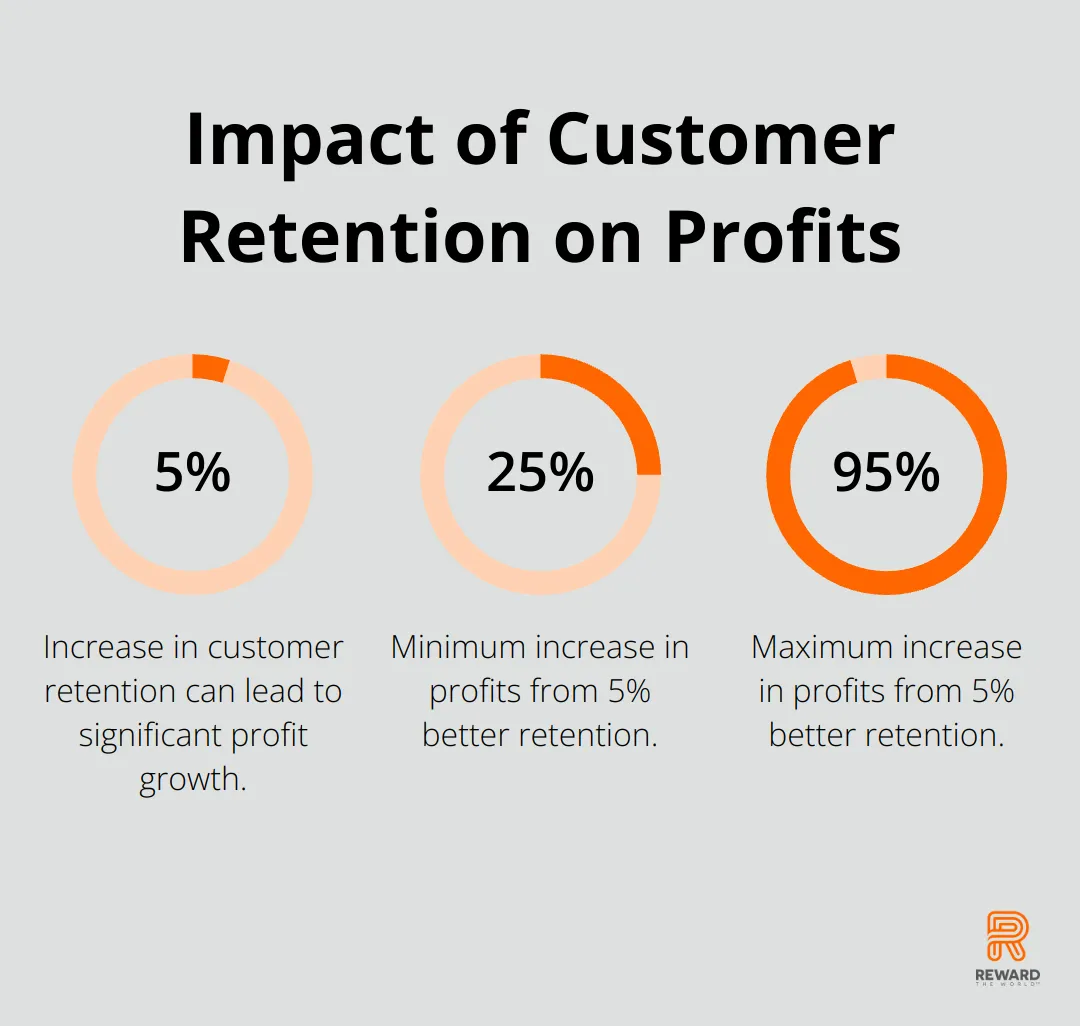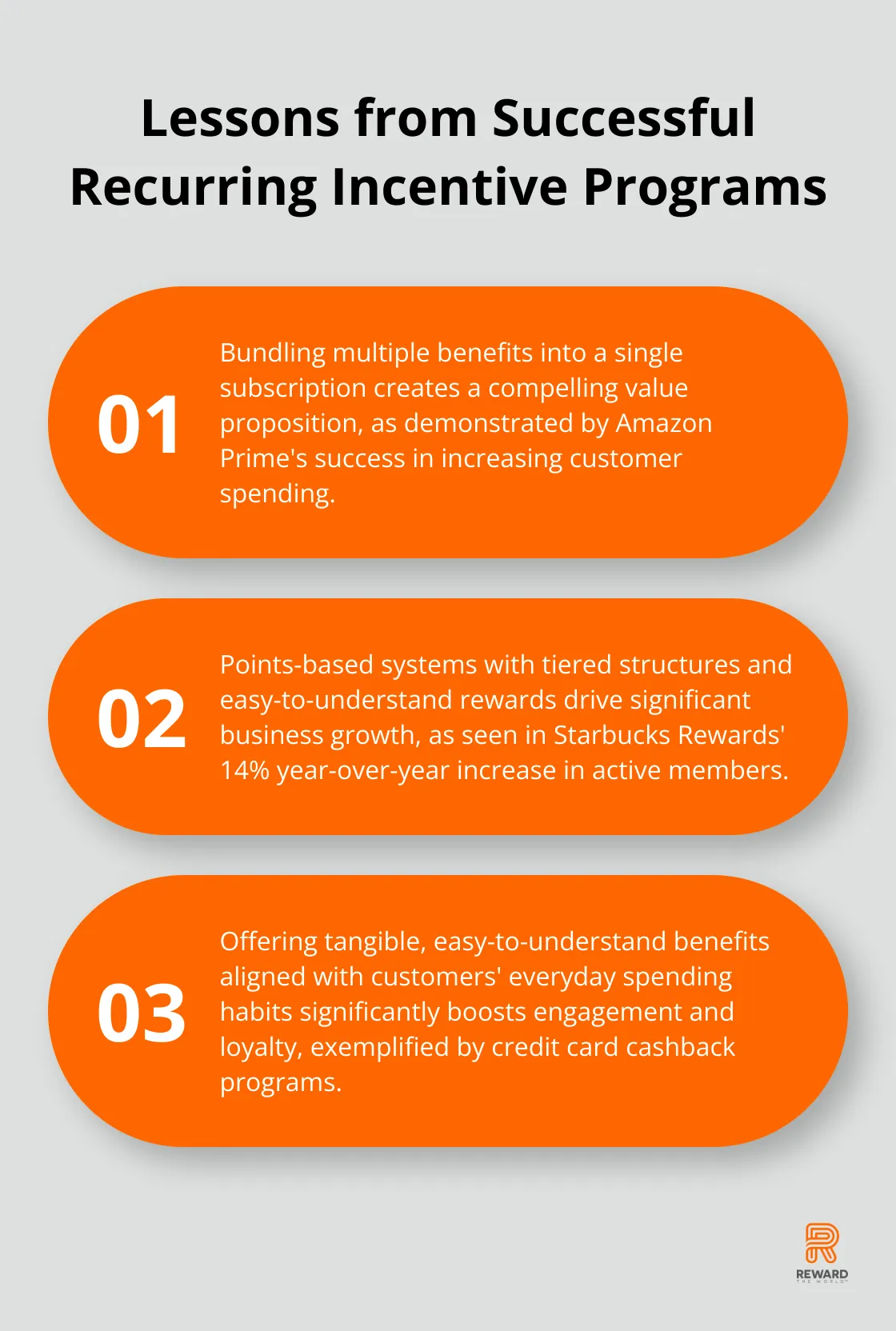
Customer retention is the lifeblood of successful businesses. At Reward the World, we’ve seen firsthand how recurring incentives can transform customer loyalty.
Subscription rewards and ongoing perks keep customers engaged and coming back for more. In this post, we’ll explore why recurring incentives are reshaping the future of customer retention and how you can implement them effectively.
Why Are Recurring Incentives So Effective?
The Power of Consistent Rewards
Recurring incentives are regular, ongoing rewards that businesses offer to customers for their continued loyalty and engagement. Unlike one-time rewards, these incentives create a consistent pattern of positive reinforcement, which encourages customers to stay engaged with a brand over the long term.
The Psychology of Frequent Rewards
Studies show that small, frequent rewards motivate behavior more effectively than larger, infrequent ones. These micro-incentives drive behavior and boost loyalty more effectively than big, infrequent prizes. This psychological effect explains why recurring incentives shape customer behavior so powerfully.
Measurable Impact on Customer Loyalty
The numbers speak for themselves when it comes to the effectiveness of recurring incentives. A recent study revealed that a 5% increase in customer retention can lead to a 25-95% increase in profits. This dramatic impact underscores the value of implementing a strong recurring incentive program.

Customization Drives Engagement
One of the key strengths of recurring incentive programs is their ability to be customized. Research shows that loyalty programs can significantly impact customer purchase behavior. This flexibility allows businesses to tailor their incentives to specific customer segments (based on demographics, purchase history, or preferences), which maximizes engagement and loyalty.
Real-World Success Stories
Let’s look at some concrete examples of recurring incentive programs in action:
- Starbucks’ rewards program, which offers regular perks to frequent customers, reported a 12% increase in Q3 revenues to $9.2 billion.
- Amazon Prime users spend an average of $1,100 annually, compared to just $600 for non-members.
These figures highlight the tangible benefits of well-designed recurring incentive programs. While many platforms offer reward solutions, businesses should consider options that provide global reach and instant reward delivery across multiple categories (such as Reward the World) to maximize the effectiveness of their recurring incentive programs.
As we move forward, let’s explore how businesses can implement these powerful recurring incentive programs to boost customer retention and drive long-term success.
How to Build an Effective Recurring Incentive Program
Choose the Right Type of Incentive
The first step involves selecting the most appropriate type of recurring incentive for your business and customer base. Points systems, cashback rewards, and tiered programs rank among the most popular options.
Points systems excel for businesses with frequent transactions. Customers earn points with each purchase, which they redeem later for rewards. This model promotes repeat purchases and adapts easily to different customer segments.
Cashback rewards prove particularly effective for high-value purchases or services. They offer a tangible, monetary benefit that customers understand and appreciate.
Tiered reward programs create a sense of exclusivity and motivate customers to increase their engagement to reach higher levels. Sephora’s Beauty Insider program exemplifies this approach.
Design Your Incentive Structure
After choosing your incentive type, you must design a structure that balances customer appeal with business profitability. Set clear goals for your program. Do you want to increase purchase frequency, average order value, or both?
Next, determine the reward values. They should attract customers but not erode your profits. Try to achieve a program cost of 2-3% of customer spend.
Consider implementing a multi-tier system. This approach caters to different customer segments and encourages progression. For example, you might offer basic rewards for all customers, enhanced benefits for regular shoppers, and exclusive perks for your top spenders.
Integrate with Existing Strategies
Your recurring incentive program shouldn’t exist in isolation. It should complement and enhance your existing customer retention strategies. Here’s how to integrate effectively:
-
- Align with your brand: Ensure your rewards reflect your brand values and resonate with your target audience.
- Leverage your data: Use customer data to personalize rewards and communications. McKinsey research shows that 71 percent of consumers expect personalized interactions from brands.

- Omnichannel integration: Enable customers to earn and redeem rewards across all your channels – in-store, online, and through your mobile app.
- Employee training: Educate your staff about the program so they can promote it effectively and answer customer questions.
- Regular review and optimization: Analyze program performance continuously and make adjustments based on customer feedback and redemption rates.
Implementing a recurring incentive program requires ongoing management and optimization to ensure it continues to drive customer loyalty and business growth. With the right approach and tools (such as a global incentives platform), you can create a program that keeps your customers coming back for more.
In the next section, we’ll explore real-world case studies of successful recurring incentive programs, providing valuable insights and inspiration for your own loyalty initiatives.
Real-World Success Stories of Recurring Incentives
Amazon Prime: The Subscription That Transforms Shopping
Amazon Prime exemplifies the power of subscription-based recurring incentives. This program offers a comprehensive package of benefits (free shipping, streaming services, and exclusive deals) for a fixed annual or monthly fee. The impact on customer behavior is striking:
Amazon Prime members spend significantly more than non-members. This increase in spending underscores the program’s effectiveness in fostering customer loyalty and boosting purchase frequency.
Amazon Prime’s success teaches us that bundling multiple benefits into a single subscription creates a compelling value proposition. This approach keeps customers engaged and encourages them to spend more.
Starbucks Rewards: A Recipe for Customer Loyalty
Starbucks Rewards showcases how a points-based system can drive significant business growth. Customers earn stars (points) for every purchase, which they can redeem for free drinks, food items, and merchandise.
The results are impressive. Starbucks Rewards boasts 32.6 million active members in the U.S. alone, up 14% year-over-year.
The success of Starbucks Rewards stems from its tiered structure, easy-to-understand rewards, and seamless integration with mobile ordering. These features create a frictionless experience that encourages frequent visits and higher spending.
Credit Card Cashback: Turning Transactions into Rewards
Credit card cashback programs have become a cornerstone in the financial services industry. These programs offer a straightforward way to reward customer loyalty by providing a percentage of cash back on purchases (often with higher rates for specific categories).
For example, the Citi Double Cash card offers 2% cashback on all purchases, while the American Express Blue Cash Preferred card provides 6% cashback on groceries and streaming services.
The effectiveness of these programs is clear. A study by J.D. Power found that credit card holders who redeem rewards spend an average of $1,128 more per month on their cards compared to non-redeemers.
This success demonstrates that offering tangible, easy-to-understand benefits aligned with customers’ everyday spending habits significantly boosts engagement and loyalty.
Implementing Effective Recurring Incentive Programs
While these examples highlight the power of recurring incentives, implementing such programs can be complex. Businesses need robust tools to create and manage global incentive programs effectively.
Platforms like Reward the World offer solutions for businesses of all sizes to implement effective recurring incentive strategies. With features such as instant reward delivery across multiple categories and support for over 60 million rewards, these platforms simplify the process of creating and managing loyalty programs.

Final Thoughts
Recurring incentives have revolutionized customer retention strategies. Consistent rewards foster long-term loyalty, increase customer lifetime value, and drive sustainable growth. The psychology behind frequent, smaller rewards creates a powerful motivator for continued engagement, outperforming traditional one-time incentives.
Subscription rewards will dominate the loyalty landscape in the future. Businesses will focus on personalized, data-driven incentive programs that adapt to individual customer preferences and behaviors. Mobile-first strategies will gain prominence, with loyalty programs seamlessly integrated into smartphone apps for easy access and redemption.
Reward the World offers a comprehensive solution for businesses looking to implement or upgrade their recurring incentive programs. With its global reach and vast selection of incentives, Reward the World empowers businesses to create engaging loyalty programs. Companies can position themselves for success in an increasingly competitive marketplace through effective recurring incentive strategies.
